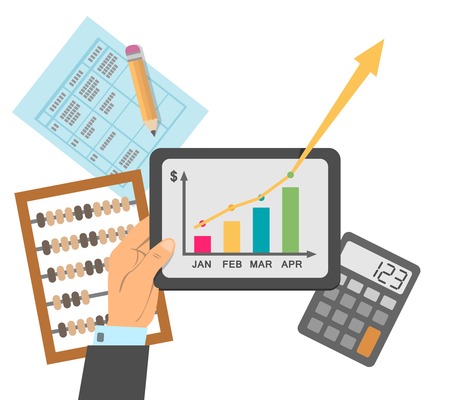1. Choosing the Right Tax Software for Your Needs
When it comes to getting the biggest refund possible, picking the right tax software is your first and most important step. Not all tax software is created equal, so it’s crucial to find one that matches your unique financial situation, filing status, and how comfortable you are with doing taxes yourself.
IRS-Approved Programs: Why They Matter
Always choose a tax program that’s approved by the IRS. This ensures your sensitive data is protected and your return will be accepted by the government. Most well-known brands like TurboTax, H&R Block, and TaxAct are IRS-approved and have strong reputations for security and accuracy.
Understanding Your Financial Situation
The best tax software for you depends on your income level, the complexity of your finances, and whether you’re self-employed, have investments, or own a home. Here’s a quick guide to help:
| Your Situation | Recommended Features |
|---|---|
| Simple (W-2 only, single or married filing jointly) | Basic/free version; automatic import of W-2s; simple Q&A format |
| Self-Employed/Freelancer | Schedule C support; expense tracking; 1099 forms; guidance for deductions |
| Investments/Rental Property | Capital gains/loss reporting; Schedule E support; advanced deduction finders |
| Families/Dependents | Child tax credits; earned income credit calculators; dependent care deductions |
Free vs. Premium Versions: What’s Best for You?
Many tax programs offer both free and paid versions. Here’s what to consider:
- Free Version: Great for simple returns (just W-2 income, standard deduction). Limited support for extra forms or complex situations.
- Premium Version: Includes extra forms for self-employment, investments, rental properties, and more personalized support. Worth it if you want to maximize deductions or have a complicated tax situation.
Quick Comparison Table: Free vs. Premium Tax Software
| Free Version | Premium Version | |
|---|---|---|
| Best For | Simple returns (W-2 only) | Complex returns (self-employed, investments) |
| Support Level | Email or chat basics only | Live expert help available |
| Deductions & Credits Help | Basic guidance | Detailed deduction finder tools & calculators |
| Status Updates & Audit Support | No audit support usually included | Audit support and notifications often included |
User Experience & Comfort Level Matters Too!
If taxes make you nervous, look for software with a simple Q&A interface that guides you step-by-step. If you’re confident with numbers, choose one that allows direct form entry for faster filing. Most top programs also let you import last year’s return to save time.
2. Gathering All Necessary Tax Documents Ahead of Time
Before you dive into using tax software, it’s important to gather all the documents and information you’ll need. Having everything ready can make the process smoother, help you enter accurate details, and ensure you don’t miss out on valuable credits or deductions. Here’s what you should have on hand:
Essential Tax Documents Checklist
| Document Type | Description | Why It Matters |
|---|---|---|
| W-2 Forms | Issued by your employer(s) showing your annual wages and taxes withheld. | Needed to report income from jobs and calculate your refund or tax due. |
| 1099 Forms | Covers non-employee income like freelance work (1099-NEC), interest (1099-INT), dividends (1099-DIV), unemployment benefits (1099-G), and more. | Ensures all taxable income is reported and helps avoid IRS notices for missing income. |
| Receipts for Deductions | Charitable donations, business expenses, medical costs, education expenses, and childcare costs. | Helps claim deductions and credits that reduce your taxable income or increase your refund. |
| Social Security Numbers (SSN) | Your SSN plus those for your spouse and dependents, if applicable. | Needed to claim family-related credits (like Child Tax Credit) and file an accurate return. |
| Last Year’s Tax Return | A copy of last year’s federal and state returns. | Makes it easier to transfer data, carry over unused deductions/credits, and verify information. |
| Bank Account Information | Your routing and account numbers for direct deposit or payment. | Simplifies getting your refund quickly or paying any balance due electronically. |
Tips to Stay Organized
- Create a folder: Use a physical folder or digital file on your computer to store all tax-related documents as they arrive.
- Check off items: Use a checklist (like the table above) to mark each item as you gather it so nothing is missed.
- Double-check deadlines: Make sure you receive all expected forms by early February. If something is missing, contact the issuer right away.
The Bottom Line: Preparation Pays Off
By gathering these documents before starting with your chosen tax software, you’ll save time, avoid unnecessary stress, and set yourself up to claim every possible credit or deduction. The more organized you are now, the easier the rest of the tax filing process will be!

3. Understanding Built-In Features That Maximize Refunds
Most tax software programs are loaded with handy tools and features designed to help you get the largest refund possible. Knowing how to use these built-in features can make a big difference, especially if you’re not a tax pro. Here’s a breakdown of some important features you should look for and how they work:
Deduction Finders
Deduction finders are smart tools that scan your entries and suggest credits or deductions you might be missing. They often ask follow-up questions based on your answers—so be sure to answer every question honestly and thoroughly. This feature is especially helpful for catching commonly missed write-offs like student loan interest, educator expenses, or state sales tax.
Common Deductions Detected by Software
| Deduction Type | Description |
|---|---|
| Student Loan Interest | Interest paid on qualifying student loans, up to $2,500 per year. |
| Educator Expenses | Up to $300 for classroom supplies if you’re a teacher. |
| Charitable Donations | Money or items donated to qualified organizations. |
| Medical Expenses | If they exceed 7.5% of your adjusted gross income. |
| State and Local Taxes (SALT) | Total deduction limited to $10,000 per year. |
Import Tools
Tax software often lets you import W-2s, 1099s, and even data from last year’s return directly into your current forms. This saves time and reduces the risk of manual entry mistakes. Some programs connect directly with employers or financial institutions so you don’t need to type in numbers line by line.
Benefits of Using Import Tools
- Avoids manual data errors
- Saves time during setup
- Makes it easier to compare year-to-year changes
Calculators for Dependents and Credits
If you have kids or other dependents, most tax software will walk you through eligibility for credits like the Child Tax Credit, Earned Income Tax Credit (EITC), or Child and Dependent Care Credit. The built-in calculators ask simple questions about age, relationship, and support provided—then crunch the numbers automatically so you know what you qualify for without second-guessing yourself.
Key Dependent-Related Credits Tracked by Software
| Credit Name | Description/Benefit |
|---|---|
| Child Tax Credit | Up to $2,000 per qualifying child under age 17. |
| EITC (Earned Income Tax Credit) | A major credit for low-to-moderate income families; amount varies by income and number of children. |
| Child & Dependent Care Credit | Covers part of daycare costs while you work or look for work. |
Don’t Leave Money on the Table!
The best way to ensure you don’t miss out on valuable refunds is to let the tax software guide you step-by-step and take advantage of all these built-in features. Take your time when answering questions; even small details can lead to bigger savings. Remember: every deduction and credit counts when it comes to maximizing your refund!
4. Double-Checking Entries and Making Use of Expert Help
Why Double-Checking Your Tax Return Matters
Even the best tax software can’t catch every little mistake if you enter something incorrectly. Typos, missing information, or accidentally skipping a form can all affect your refund amount—or even trigger an IRS notice. Taking a few extra minutes to review your entries can make a huge difference in your final refund.
Common Errors to Watch Out For
| Error Type | What to Look For |
|---|---|
| Personal Information | Double-check Social Security numbers, birth dates, and spelling of names. |
| Income Reporting | Make sure all W-2s, 1099s, and other forms are entered and matched to the right employer or payer. |
| Deductions & Credits | Confirm eligibility and double-check amounts for deductions like student loan interest, mortgage interest, or education credits. |
| Bank Account Details | Verify routing and account numbers for direct deposit refunds. |
| E-filing Status | Ensure that your return is marked as “ready to file” and hasn’t been rejected by the software for missing info. |
Using Built-In Support Features Wisely
Most major tax software platforms offer built-in support tools designed to help you maximize your refund and avoid mistakes. Here’s how you can make the most of them:
Support Features Available in Tax Software
| Feature | How It Helps You |
|---|---|
| Live Chat with Tax Pros | Get real-time answers from certified experts about tricky deductions or complex tax situations. |
| Audit Guidance Tools | If you get an IRS notice or audit flag, these features walk you through next steps and documentation requirements. |
| Knowledge Base & FAQs | Search for answers to common questions and learn about recent tax law changes that might impact your refund. |
| Error Checkers & Alerts | The software scans your return for red flags, inconsistencies, or missed opportunities for credits and deductions. |
Pro Tip:
If you’re unsure about any entry or deduction—even after using the software’s help tools—don’t hesitate to use live chat or schedule a call with a tax pro. Sometimes a quick question can mean hundreds more on your refund!
5. Filing Strategically and Planning for Next Year
Timing Your Tax Filing for Maximum Refunds
When it comes to getting the biggest refund, timing can make a difference. Most tax experts recommend filing as soon as you have all your documents ready. Filing early not only helps you get your refund sooner, but also reduces your risk of tax identity theft. If you owe money, however, you can still prepare your return early and wait until the April deadline to file and pay.
| Filing Early | Filing Closer to Deadline |
|---|---|
| Get refund faster Lower fraud risk More time to fix errors |
Extra time to gather info Delay payment if you owe Can use last-minute info (like late tax forms) |
Tracking Your Refund with Tax Software Tools
Most tax software programs include built-in tools for tracking your refund status. After e-filing, youll get an IRS confirmation and a projected refund date. Use the “Where’s My Refund?” feature—either in the software or on the IRS website—to keep tabs on your money. Set up email or text alerts if available so you’re always in the loop.
How to Track Your Refund Step-by-Step:
- E-file your return using your chosen tax software.
- Save or print your confirmation number.
- Use the IRS “Where’s My Refund?” tool with your Social Security number, filing status, and refund amount.
- Check back regularly for updates.
Using Planning Tools for a Bigger Refund Next Year
The best tax software isn’t just for filing—it also helps you plan for next year. Take advantage of features like deduction finders, withholding calculators, and personalized tips based on this year’s return. Many programs let you save last year’s data, compare scenarios, and even set reminders for estimated payments or future contributions (like IRA deposits).
| Software Tool | How It Helps You Plan Ahead |
|---|---|
| Deduction Finder | Identifies deductions/credits you missed this year so you can prepare better next time |
| Withholding Calculator | Tells you if you should adjust paycheck withholding for a bigger refund or smaller tax bill next year |
| Contribution Tracker | Keeps tabs on IRA/HSA contributions to maximize eligible deductions before next April |
| Email/Calendar Reminders | Sends alerts for important dates or paperwork so nothing gets missed |
Pro Tips:
- After filing, review any recommendations from your software about ways to improve next year’s return.
- If your life changes (new job, marriage, kids), update your profile—your software can help estimate how these will impact your taxes.
- Download or print a copy of this year’s return to reference when planning ahead.

